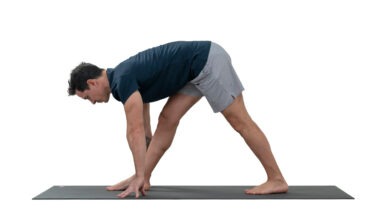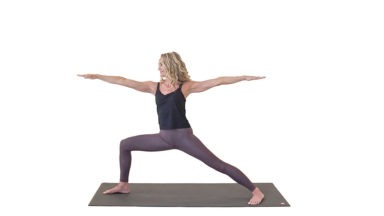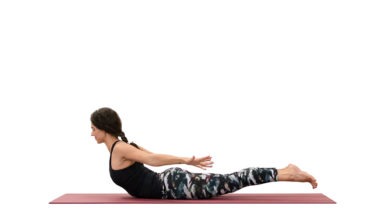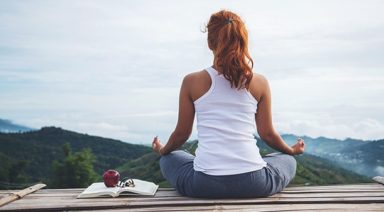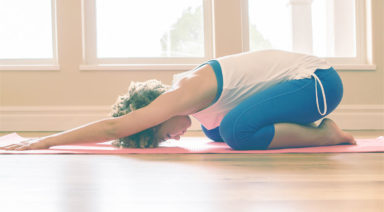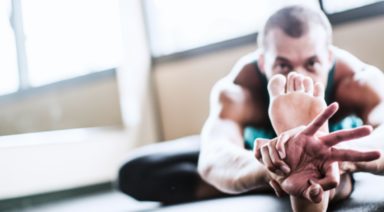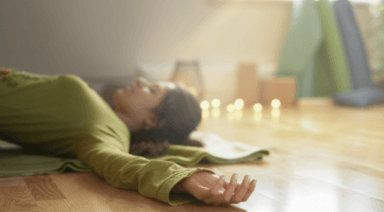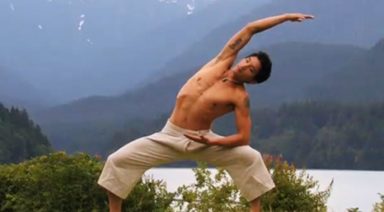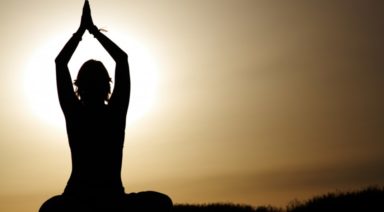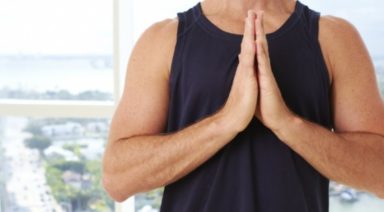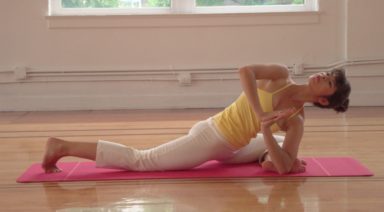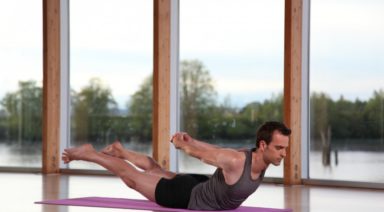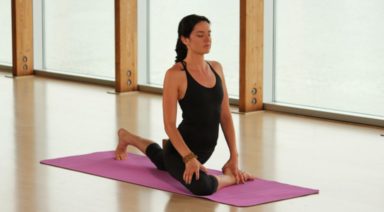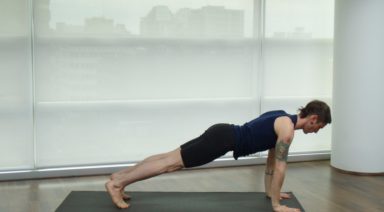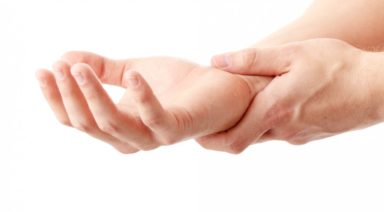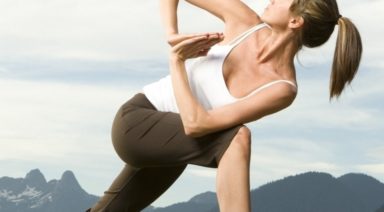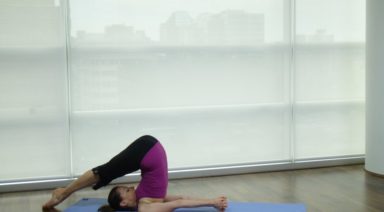Utthita Trikonasana: Triangle Pose
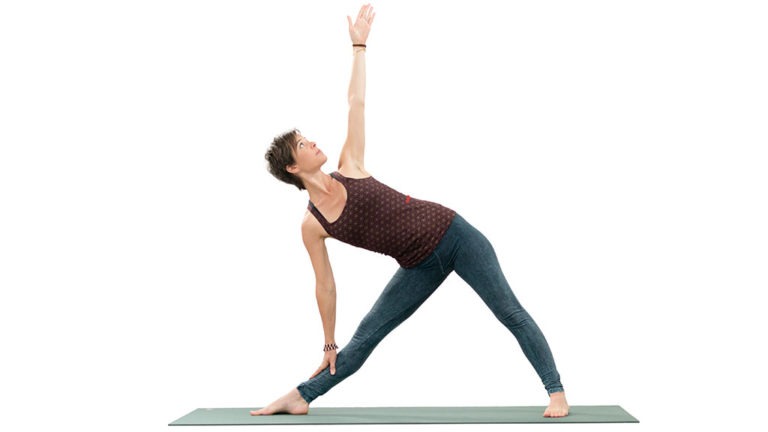
ADJUSTMENTS | BENEFITS | SEQUENCING | SANSKRIT | STEPS
A classic standing posture in many yoga lineages utthita trikonasana (oo-TEE-tah trik-cone-AHS-uh-nah), strengthens and stretches the entire body. Approaching the pose with knowledge of intelligent modifications will help you enjoy the posture and all it has to offer.
Philosophy + Origin
In hatha yoga, where the intent is to unite opposing forces – sun with moon, masculine with feminine, light with dark – this pose offers an opportunity to embody this philosophy when you focus on finding stability while you expand. When you look at the physical shape of the posture, you also see the triangles being formed. And, when you look a little closer, you find several triangles hidden in the shape of the body – the two legs with the floor, floating under the side body, and between the front foot and the front hand.
ADJUSTMENTS/MODIFICATIONS:
- Place your hand on a block next to your front leg to help keep length in the spine.
- Avoid forcing the hips to squared.
- Micro-bend your front knee to prevent locking it out.
- Look to the side or down rather than looking up to prevent strain in your neck.
- Practice the posture with your entire back body supported at a wall.
STEP-BY-STEP:
- Begin in warrior II pose with your right foot forward.
- Straighten your front knee and keep a micro-bend so the knee does not lock out.
- Exhale to send your left hip toward your back foot and hinge toward the front of your mat.
- Place your right hand on the ground, block, or shin. Reach your left hand toward the sky.
- Gently roll your left ribs back as you encourage your right ribs forward. Both sides of your torso should feel equal in length.
- Draw your tailbone down toward your left heel.
- Take your gaze toward your top hand if comfortable on your neck.
- Hold the pose for up to 60 seconds. Use an inhalation to bring yourself back up, rooting through the back heel and using it as an anchor. Change the position of the feet and repeat on the opposite side.
PREPARATORY POSES:
- Standing wide-legged forward fold | Prasarita padottanasana
- Warrior II | Virabhadrasana II
- Tree pose | Vrksasana
SEQUENTIAL POSES:
- Revolved triangle pose | Parivrtta utthita trikonasana
- Head to knee pose | Janu sirsasana
- Pyramid pose | Parsvottanasana
COUNTER POSES:
- Pose dedicated to the sage Marichi (C) | Marichyasana C
- Seated forward fold | Paschimottanasana
- Cow face pose | Gomukhasana
SANSKRIT:
- Utthita = extended
- Trikona = triangle
- Asana = pose
PHYSICAL BENEFITS:
- Expands chest and shoulders.
- Stretches and strengthens thighs, knees, ankles.
- Stretches hips, groins, hamstrings, calves.
- Encourages natural arches in the feet.
ENERGETIC BENEFITS:
- Relieves stress.
- Calms the mind.
- Opens up energetic channels.
Legal Disclaimer Before participating in any exercise program or using any fitness products or services that may be described and/or made accessible in or through the Gaia Website and/or the Services, you should consult with a physician or other healthcare provider. Read more about Gaia’s Terms Of Use.
Parsvottanasana: Intense Side Stretch Pose
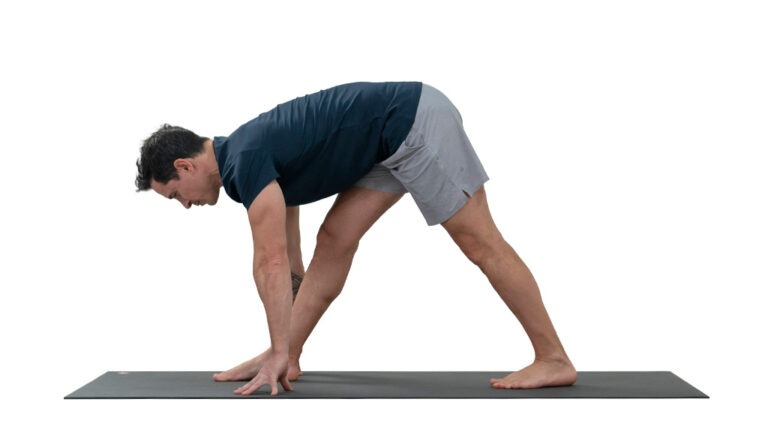
ADJUSTMENTS | BENEFITS | SEQUENCING | SANSKRIT | STEPS
From lengthening the spine to stretching the legs to calming the mind, there’s a little bit of everything in parsvottanasana (parsh-voh-tahn-AHS-ah-nah) Also known as intense side stretch pose or pyramid pose, this shape is helpful for finding balance while stretching hamstrings.
Parsvottanasana requires a combination of flexibility, strength, and patience. With the help of props such as blocks or a wall, this pose becomes accessible for everyone.
ADJUSTMENTS/MODIFICATIONS:
- Blocks: Place hands on blocks to help keep the torso long.
- Wall: Place hands on a wall in front of you to work on strengthening the muscles of the back.
- Heart opening variation: Take the hands in reverse prayer position behind the back to stretch and open your shoulders and chest while also challenging your balance. If reverse prayer isn’t accessible, you can still bring the arms behind the back, reaching for opposite elbows instead.
- Adjust your stance: If the back heel is lifted off of the floor, shorten the stance so you can push through the heel to activate the back leg. For more stability, widen your stance.



